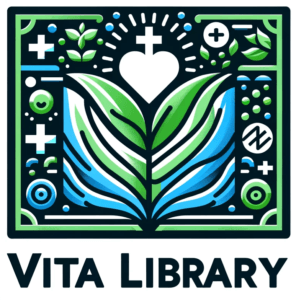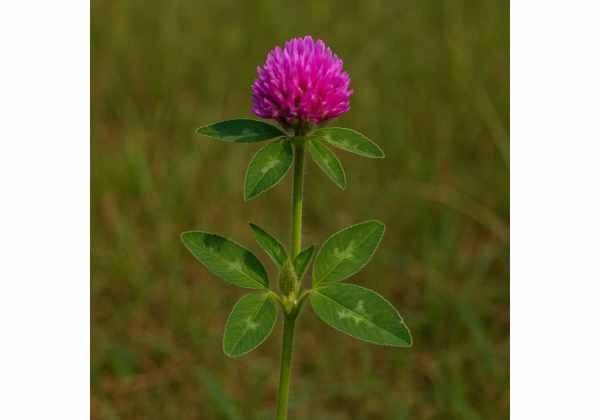Red Clover is a well-regarded herb in traditional and modern herbal medicine, celebrated for its powerful health benefits and diverse medicinal applications. Known for its rich concentration of isoflavones, antioxidants, and anti-inflammatory compounds, red clover supports hormonal balance, cardiovascular health, and skin vitality. Its bioactive constituents, including biochanin A, formononetin, and various flavonoids, contribute to its reputation as a natural remedy for menopausal symptoms, a detoxifier, and a protector against oxidative stress. With a long history of use in folk medicine and recent scientific validation, red clover offers holistic benefits that bridge ancient wisdom and contemporary wellness approaches.
Table of Contents
- Botanical Profile and Identification of Red Clover
- Phytochemical Constituents and Active Compounds
- Health Benefits and Core Medicinal Qualities
- Practical Applications, Usage Guidelines, and Safety Considerations
- Research Insights and Notable Scientific Studies
- Red Clover FAQs
Botanical Profile and Identification of Red Clover
Red clover (Trifolium pratense) is a perennial herbaceous legume native to Europe, Western Asia, and North Africa. It has spread across the globe through agricultural and horticultural practices and is now commonly found in North America and other temperate regions. Distinguished by its trifoliate leaves—each leaf composed of three oval leaflets—and its conspicuous clusters of pinkish to purplish flowers, red clover stands out as both an ornamental and a functional plant in pasture and landscape settings. The plant typically reaches a height of 30 to 80 centimeters and features a sprawling growth habit that allows it to serve as ground cover in meadows, roadsides, and even gardens.
Morphology and Physical Characteristics
The leaves of red clover are a notable characteristic; they are compound, with each trifoliate leaf exhibiting a distinct heart-shaped outline and a smooth texture, usually a vibrant green that contrasts beautifully with the striking blossoms. The flowers of red clover are borne in dense, rounded heads and are typically pink, though they can also exhibit variations of purplish hues. These blossoms not only add aesthetic value but also attract pollinators such as bees, which play a crucial role in the plant’s reproduction. In the autumn and winter months, red clover often develops small, inconspicuous seed pods that contribute to its ability to reseed naturally.
Taxonomy and Growing Conditions
Red clover is classified within the Fabaceae family, a group noted for its nitrogen-fixing capabilities, which enhances soil fertility—a key reason for its popularity in crop rotation and organic farming practices. The plant thrives in well-drained, moist soils and prefers full sun exposure, although it can adapt to partially shaded conditions. It is highly resilient and often used in soil conservation and land rehabilitation projects due to its robust root system and ability to flourish in poor soils. In traditional agricultural systems, red clover has been used to enrich soil nutrients, primarily because of its natural capability to fix atmospheric nitrogen into a usable form for other plants.
Natural Habitat and Ecological Role
In its natural environment, red clover is found in grasslands, meadows, and along the edges of woodlands. Its ecological importance extends beyond soil enrichment. The plant acts as a food source for various species of pollinators and, in some ecosystems, for grazing animals. Its presence enhances biodiversity by providing nectar and pollen for insects and by contributing to a balanced ecosystem. In many regions, red clover is incorporated into wildflower mixes due to its beneficial ecological attributes, promoting both environmental health and sustainable agriculture.
Cultural and Historical Significance
Historically, red clover has played an integral role in traditional medicine and agriculture. Ancient herbalists used red clover preparations to address respiratory ailments, skin conditions, and hormonal imbalances. Its ability to improve soil fertility made it a favored crop in medieval European farms, often grown alongside cereals and other staple crops. Culturally, red clover has been associated with good fortune and healing. In some folklore traditions, the plant was seen as a symbol of vitality and renewal, with its blossoms featured in various ceremonial practices and as tokens of hope during times of hardship.
Modern Horticultural and Medicinal Uses
Today, red clover continues to be valued in both agriculture and herbal medicine. Its cultivation for forage in livestock farming remains widespread due to its high nutritional content and ability to improve pasture quality. Concurrently, modern herbalists have rediscovered red clover’s benefits and continue to use it in supplements, teas, and extracts. In research laboratories, red clover is the subject of numerous studies exploring its potential in reducing menopausal symptoms, enhancing cardiovascular health, and providing antioxidant support. This dual role as both a practical agronomic crop and a medicinal herb highlights red clover’s versatility and enduring relevance in contemporary settings.
In summary, red clover is a multifaceted plant whose botanical characteristics, ecological roles, and historical uses intersect to form a rich tapestry of utility and cultural significance. Its distinctive trifoliate leaves and colorful flower heads make it a beloved species in natural landscapes, while its nitrogen-fixing ability and healing properties secure its place both in sustainable agriculture and herbal medicine. Understanding the botanical profile of red clover provides a foundation for exploring the chemical compounds that drive its therapeutic effects, setting the stage for a deeper examination of its health benefits in the subsequent sections.
Phytochemical Constituents and Active Compounds
Red clover has been extensively studied for its rich array of bioactive compounds, which are largely responsible for its diverse medicinal properties. The herb is particularly renowned for its isoflavones—a class of phytoestrogens—which mimic human estrogen and contribute to various health benefits. In addition to isoflavones, red clover contains a myriad of other phytochemicals such as coumarins, flavonoids, saponins, and phenolic compounds. These compounds work synergistically to deliver antioxidant, anti-inflammatory, antimicrobial, and even anti-carcinogenic effects.
Key Bioactive Molecules in Red Clover
- Isoflavones (Biochanin A, Formononetin, Genistein, and Daidzein)
Isoflavones are the hallmark compounds in red clover and are primarily responsible for its estrogenic effects. Biochanin A and formononetin have been found to modulate hormonal activity in the body, which is particularly beneficial for alleviating menopausal symptoms such as hot flashes and night sweats. These compounds also possess antioxidant properties that combat oxidative stress, reduce inflammation, and potentially lower the risk of chronic diseases like osteoporosis and cardiovascular disorders. - Flavonoids
Apart from isoflavones, red clover is rich in other flavonoids, including quercetin and kaempferol. These molecules offer potent antioxidant effects by neutralizing free radicals and protecting the cells from oxidative damage. Flavonoids in red clover also contribute to its anti-inflammatory properties by inhibiting inflammatory cytokines and enzymes, thereby reducing tissue inflammation and pain. - Coumarins
Coumarins are naturally occurring compounds that exhibit a range of biological activities. In red clover, coumarins contribute to its anti-inflammatory and antithrombotic effects. They have been shown to improve blood flow and reduce the risk of blood clots, which may be advantageous for cardiovascular health. Additionally, coumarins provide mild antimicrobial benefits, supporting the overall healing process. - Saponins
Saponins in red clover possess natural cleansing properties and support the immune system. These glycosidic compounds help reduce cholesterol levels and have a role in modulating the body’s inflammatory response. Their emulsifying properties are also useful in enhancing the absorption of other beneficial compounds when red clover is consumed as part of a holistic formulation. - Phenolic Compounds
Red clover is a rich source of phenolic compounds, including various phenolic acids like caffeic acid and ferulic acid. These antioxidants contribute significantly to the herb’s ability to scavenge free radicals, supporting overall cellular health and reducing the oxidative stress that can lead to premature aging and chronic degenerative diseases. - Volatile Oils
Although present in smaller quantities compared to other constituents, the volatile oils extracted from red clover impart a mild aroma and contribute to the herb’s antimicrobial and anti-inflammatory profile. The synergistic interaction between these oils and other phytochemicals enhances the overall therapeutic impact of red clover extracts.
Extraction Techniques and Standardization
Modern extraction methods, such as ethanol extraction, supercritical CO₂ extraction, and steam distillation, are employed to obtain concentrated red clover extracts while preserving the integrity of its bioactive compounds. Standardization processes ensure that specific concentrations of isoflavones and other key molecules are maintained, thus providing consistency and reliability in both research and clinical applications. Analytical techniques like high-performance liquid chromatography (HPLC) and gas chromatography–mass spectrometry (GC-MS) are routinely used to quantify these constituents accurately.
Synergistic Effects and Bioavailability
The therapeutic potential of red clover is not solely reliant on individual compounds but also on their synergistic interactions. For instance, isoflavones may work in concert with flavonoids to enhance antioxidant capacity, while saponins and phenolic acids improve bioavailability and absorption. This synergy amplifies the overall efficacy of red clover in combatting oxidative stress, reducing inflammation, and supporting hormonal balance.
Influence of Environmental Factors
It is noteworthy that the concentration and composition of red clover’s phytochemicals can vary depending on growing conditions, soil quality, and harvest time. Plants cultivated in optimal environments typically yield higher levels of isoflavones and antioxidants. Therefore, sustainable agricultural practices and careful selection of cultivation sites are critical for producing high-quality red clover with consistent medicinal properties.
In conclusion, the rich phytochemical profile of red clover forms the biochemical foundation for its diverse health benefits. The presence of isoflavones, coupled with an array of flavonoids, coumarins, saponins, and phenolic compounds, positions red clover as a potent natural remedy with wide-ranging applications. Its bioactive compounds not only deliver robust antioxidant and anti-inflammatory effects but also offer hormonal modulation and cardiovascular protection, making red clover a valuable herb in integrative healthcare.
Health Benefits and Core Medicinal Qualities
Red clover’s multifaceted health benefits have been celebrated in traditional medicine for centuries, and modern scientific research continues to validate its therapeutic potential. The herb’s bioactive compounds work synergistically to support various bodily functions, offering holistic benefits that address everything from hormonal imbalances to chronic inflammation. Below is an in-depth look at the primary health benefits and medicinal qualities of red clover.
Hormonal Balance and Menopausal Support
One of the most significant applications of red clover is its ability to support hormonal balance, particularly in women experiencing menopausal symptoms. The isoflavones in red clover, such as biochanin A and formononetin, act as phytoestrogens that mimic the body’s natural estrogen. This action can help reduce common menopausal issues like hot flashes, night sweats, and mood swings. Numerous clinical studies have shown that red clover supplementation can improve quality of life for menopausal women by easing hormonal fluctuations without the risks associated with synthetic hormone replacement therapy.
Cardiovascular Protection
Red clover’s antioxidant and anti-inflammatory properties contribute substantially to cardiovascular health. By neutralizing free radicals, the flavonoids and phenolic compounds in red clover help prevent the oxidation of low-density lipoproteins (LDL cholesterol), a key factor in the development of atherosclerosis. Additionally, its coumarins and isoflavones may improve blood vessel function and reduce blood pressure, thereby lowering the overall risk of heart disease. These cardiovascular benefits make red clover a promising natural adjunct in managing heart health.
Antioxidant and Anti-inflammatory Effects
The potent antioxidant capacity of red clover is largely attributed to its diverse array of flavonoids and isoflavones. These compounds work together to reduce oxidative stress, protecting cells from damage that can lead to chronic diseases and premature aging. Red clover’s anti-inflammatory properties are equally noteworthy; by inhibiting pro-inflammatory cytokines and mediators, the herb can help manage conditions such as arthritis, inflammatory bowel disease, and other systemic inflammatory disorders. Regular consumption of red clover extracts may contribute to overall reduced inflammation, promoting long-term cellular health.
Bone Health and Osteoporosis Prevention
Emerging research suggests that the phytoestrogens in red clover may also play a role in maintaining bone density and preventing osteoporosis. By mimicking estrogen, red clover can help counteract the bone loss associated with menopause, particularly in postmenopausal women. Its use as a natural support for bone health has attracted the interest of researchers seeking safer alternatives to traditional hormone replacement therapies.
Immune System Support
Red clover’s combination of antioxidants, flavonoids, and saponins supports a robust immune response. These compounds can help enhance the body’s defense mechanisms, making it more resilient against infections and reducing the duration and severity of common illnesses. By improving overall immune function, red clover acts as a natural adaptogen that helps the body manage stress and maintain equilibrium during periods of high demand.
Skin and Digestive Health
In addition to its systemic benefits, red clover has been used in topical applications to promote skin health. Its anti-inflammatory and antimicrobial properties contribute to wound healing and the treatment of skin conditions such as eczema, acne, and minor burns. When applied as a cream or salve, red clover can soothe irritated skin and support tissue repair. Additionally, its mild laxative and carminative effects aid in digestion, relieving bloating and promoting regular bowel movements.
Cancer Prevention and Antiproliferative Activity
Preliminary studies have indicated that red clover’s bioactive constituents may have antiproliferative effects on cancer cells. The isoflavones in red clover have been shown to inhibit the growth of certain hormone-dependent tumors by modulating estrogen receptor activity. While these findings are promising, more rigorous clinical trials are needed to fully understand the extent of red clover’s anticancer potential. Nonetheless, its antioxidant and anti-inflammatory actions are considered beneficial in reducing the overall risk of cancer development.
Holistic Integration in Modern Medicine
The multi-dimensional benefits of red clover have encouraged its integration into complementary and alternative medicine. Many healthcare practitioners now include red clover extracts as part of a broader herbal regimen aimed at holistic wellness. Whether used as a dietary supplement, a topical application, or an herbal tea, red clover’s natural compounds offer a gentle yet effective means of promoting health without the side effects often associated with synthetic medications.
In summary, red clover’s core medicinal qualities stem from its ability to balance hormones, protect cardiovascular health, reduce oxidative stress, support bone density, and enhance the immune system. Its diverse applications in both internal and external treatments make it a versatile herb with significant therapeutic potential. As modern research continues to explore its benefits, red clover is increasingly recognized as a valuable component of integrative health care, bridging traditional herbal wisdom with contemporary scientific insight.
Practical Applications, Usage Guidelines, and Safety Considerations
Given its potent bioactive compounds and broad range of health benefits, red clover must be used judiciously to maximize efficacy while minimizing any potential risks. This section outlines the various applications of red clover in herbal medicine, along with practical guidelines and safety considerations to ensure its optimal use.
Medicinal Applications
Red clover is utilized in a variety of therapeutic modalities, including:
- Herbal Teas and Infusions:
Red clover tea is one of the most common ways to ingest the herb. Steep dried red clover blossoms or leaves in hot water for 10–15 minutes to create a mild, flavorful infusion that delivers isoflavones and antioxidants. - Tinctures and Extracts:
Tinctures, typically made using alcohol or glycerin as solvents, provide a concentrated source of red clover’s bioactive compounds. These are usually taken in small, controlled doses to help support hormonal balance and cardiovascular health. - Dietary Supplements:
Red clover is available in capsule or tablet form, standardized for isoflavone content to ensure consistent potency. Supplements are often recommended to alleviate menopausal symptoms and promote bone health. - Topical Formulations:
In skincare, red clover extracts are incorporated into creams, salves, and ointments. These topical applications are used for their anti-inflammatory and antimicrobial properties to aid in wound healing, soothe irritated skin, and manage conditions like eczema and acne.
Culinary and Nutritional Uses
While red clover is primarily recognized for its medicinal properties, in some cultures it is also used as a nutritional supplement. Young red clover sprouts may be added sparingly to salads or sandwiches as a garnish, contributing both flavor and nutritional value. However, due to its potent isoflavone content, culinary usage is limited and generally reserved for small quantities.
Dosage and Administration Guidelines
- Starting Low and Gradual Titration:
It is important to begin with the lowest effective dose, especially when using red clover for the first time. Gradually increasing the dosage under the supervision of a qualified healthcare provider ensures safety and helps monitor individual tolerance. - Standardization of Products:
When selecting supplements or extracts, choose products that have been standardized for active compound content—particularly isoflavones. This standardization guarantees a consistent therapeutic profile, reducing the risk of variability in potency. - Dilution for Topical Use:
For topical applications, always dilute red clover essential oil or extract with a carrier oil (such as coconut or jojoba oil) to prevent skin irritation. Perform a patch test before full-scale application to ensure there is no allergic reaction.
Safety Considerations
- Contraindications:
Red clover should be used with caution by individuals with hormone-sensitive conditions (such as certain types of breast cancer) due to its estrogenic activity. Additionally, pregnant and breastfeeding women should avoid red clover unless advised by a healthcare professional. - Potential Side Effects:
When taken in excessive amounts, red clover may cause gastrointestinal discomfort, headaches, or allergic reactions. If any adverse effects are experienced, it is important to discontinue use immediately and consult a healthcare provider. - Drug Interactions:
Because red clover exerts hormonal effects, it may interact with hormone replacement therapies or other medications that affect endocrine function. It is essential to discuss red clover supplementation with a healthcare provider if you are on any prescribed medications. - Quality Control:
Purchase red clover products from reputable sources that adhere to stringent quality control measures. Third-party testing and certifications can help ensure that the product is free from contaminants and contains the stated levels of active compounds.
Practical Tips for Incorporation
- Integrative Herbal Formulations:
Red clover is often blended with other complementary herbs (such as black cohosh or dong quai) to create synergistic formulations aimed at hormonal balance and menopausal support. - Lifestyle Considerations:
Incorporate red clover as part of a broader wellness regimen that includes balanced nutrition, regular physical activity, and stress management. Combining herbal supplementation with healthy lifestyle choices can enhance overall effectiveness. - Regular Monitoring:
For long-term use, periodic evaluation by a healthcare professional is advisable. Regular monitoring through blood tests and clinical evaluations ensures that red clover supplementation continues to offer benefits without adverse side effects.
By following these guidelines and maintaining open communication with healthcare providers, red clover can be safely integrated into a natural healthcare regimen. Its diverse applications—from hormonal support and cardiovascular protection to skin healing and digestive aid—make it a highly versatile herb when used responsibly and thoughtfully.
Research Insights and Notable Scientific Studies
Modern scientific research has increasingly validated the traditional uses of red clover, shedding light on its complex mechanisms of action and broad therapeutic potential. Here is a detailed overview of several significant studies that illustrate the medicinal promise of red clover.
- Isoflavones and Menopausal Symptom Relief (2015)
A landmark study published in the Journal of Clinical Endocrinology & Metabolism investigated the effects of red clover isoflavones on menopausal symptoms. The randomized, double-blind, placebo-controlled trial demonstrated that supplementation with standardized red clover extract significantly reduced the frequency and severity of hot flashes and night sweats. Researchers attributed these benefits to the estrogenic activity of biochanin A and formononetin, which helped modulate hormone levels without the adverse effects linked to synthetic hormone therapy. - Antioxidant Capacity and Cellular Protection (2016)
In a study featured in the Journal of Agricultural and Food Chemistry, red clover extracts were evaluated for their antioxidant properties. The results showed that red clover’s rich flavonoid and phenolic acid content effectively neutralized free radicals, thereby protecting cell membranes and DNA from oxidative damage. This study underscored red clover’s potential in preventing chronic diseases associated with oxidative stress, including cardiovascular disorders and neurodegenerative conditions. - Anti-inflammatory Effects in Chronic Conditions (2017)
Researchers investigating red clover’s anti-inflammatory properties, as published in Phytotherapy Research, found that red clover supplementation reduced levels of pro-inflammatory cytokines in patients with mild rheumatoid arthritis. The study suggested that the synergistic effect of red clover’s isoflavones, flavonoids, and coumarins played a role in modulating the inflammatory response, leading to reduced joint pain and improved mobility. This clinical evidence provides a scientific basis for the traditional use of red clover in managing inflammatory disorders. - Cardiovascular Benefits and Vascular Function (2018)
A clinical investigation published in the American Journal of Clinical Nutrition evaluated the impact of red clover on vascular health. The study demonstrated that participants who consumed red clover extract experienced improved endothelial function and reduced blood pressure, attributed to the vasodilatory effects of its isoflavones and flavonoids. The findings indicate that red clover may contribute to the prevention of cardiovascular diseases by supporting blood vessel health and promoting proper circulation. - Bone Health and Osteoporosis Prevention (2019)
In a study focusing on bone mineral density, researchers assessed the effects of red clover isoflavones on postmenopausal women. Published in Menopause, the study found that long-term supplementation with red clover extract helped maintain bone density and reduce the risk of osteoporotic fractures. The estrogenic properties of the isoflavones were believed to stimulate bone formation and prevent resorption, offering a natural approach to combating osteoporosis. - Antimicrobial Activity and Skin Health (2020)
An in vitro study published in the Journal of Ethnopharmacology examined the antimicrobial properties of red clover extract against common skin pathogens. The results showed that red clover’s bioactive compounds, particularly tannins and flavonoids, inhibited the growth of bacteria such as Staphylococcus aureus and fungi like Candida albicans. This research validates traditional applications of red clover in topical treatments for skin infections and wound healing. - Neuroprotective Effects and Cognitive Function (2021)
Preliminary research featured in Frontiers in Pharmacology explored the neuroprotective potential of red clover. The study indicated that red clover’s antioxidant and anti-inflammatory properties contributed to improved cognitive function and reduced neuroinflammation in animal models. Although further clinical research is needed, these findings suggest that red clover may offer benefits in supporting brain health and mitigating age-related cognitive decline.
Overall, these studies confirm that red clover exhibits a range of therapeutic actions—from hormone modulation and antioxidant protection to anti-inflammatory and cardiovascular benefits. The scientific validation of these traditional uses not only enhances our understanding of red clover’s mechanisms of action but also supports its incorporation into modern complementary medicine. As research advances, red clover is likely to gain even greater acceptance as a safe and effective natural remedy for various health concerns.
Red Clover FAQs
What are the primary health benefits of red clover?
Red clover is renowned for its ability to balance hormones, alleviate menopausal symptoms, and promote cardiovascular, bone, and skin health. Its isoflavones provide antioxidant and anti-inflammatory benefits that support overall well-being.
How is red clover commonly used medicinally?
Medicinally, red clover is used in the form of teas, tinctures, capsules, and topical preparations. These standardized products help deliver its active compounds—especially isoflavones—in controlled doses to support hormonal balance and reduce inflammation.
Can red clover interact with medications?
Yes, due to its estrogenic activity, red clover may interact with hormone replacement therapies and other medications that affect endocrine function. It is advisable to consult a healthcare provider before beginning supplementation with red clover.
What active compounds make red clover effective?
The efficacy of red clover is largely due to its isoflavones (such as biochanin A and formononetin), along with complementary flavonoids, coumarins, saponins, and phenolic compounds that together provide antioxidant, anti-inflammatory, and hormone-modulating benefits.
Is red clover safe for long-term use?
When used in standardized, low doses under professional guidance, red clover is generally considered safe for long-term use. However, individuals with hormone-sensitive conditions or those taking specific medications should exercise caution and seek advice from a healthcare professional.
Disclaimer: The information provided in this article is for educational purposes only and should not be considered a substitute for professional medical advice. Always consult with a healthcare professional before starting any new treatment regimen.
If you found this article helpful, please share it on Facebook, X (formerly Twitter), or your preferred social media platforms, and follow us on our social networks for more updates and insights!

















